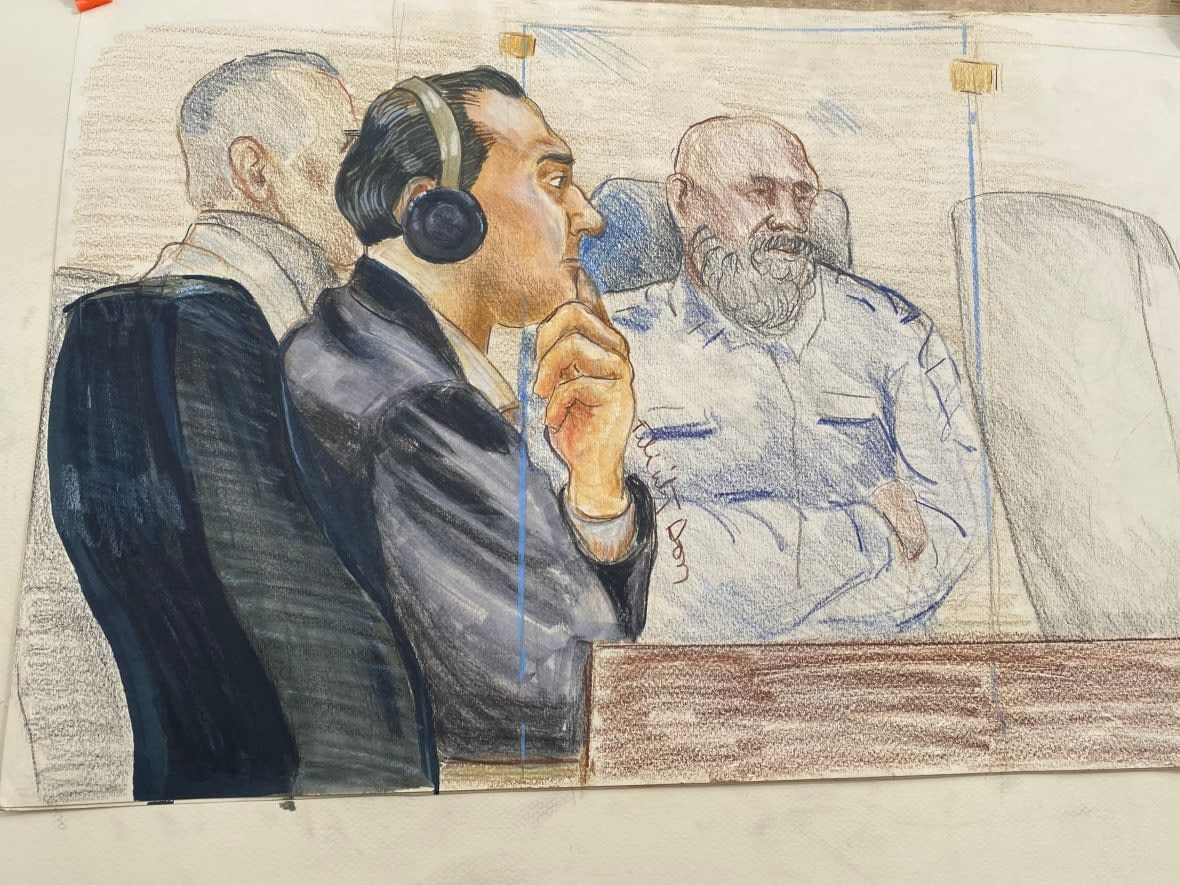Defence in trial for slain Burnaby teen blasts police witness for using victim's first name in front of jury

WARNING: This story contains graphic details of sexual assault.
Defence lawyers accused an RCMP sergeant of putting on a "show" for the jury by using the victim's first name during testimony at the Ibrahim Ali trial on Tuesday.
During testimony, Sgt. Michael Urmson referred to the victim by her first name while recalling the moments he saw her body for the first time at Burnaby Central Park in the early hours of July 19, 2017. The 13-year-old victim's name is protected by a publication ban. Ali is charged with first degree murder.
In cross-examination, defence lawyer Kevin McCullough asked why Urmson didn't call the victim by her last name while testifying.
"Because she's a human being," Urmson responded. But McCullough pressed.
"You're doing that intentionally as part of the show for the jury, right," asked McCullough
"It's very emotional because of the nature of what happened to her," he said.
"I'm going to suggest to you that you're taught at RCMP school to do exactly that. When you get on the stand in front of the jury, use their first name, to humanize this. Aren't you taught this?" McCullough pressed.
Urmson responded, "No, our training for court is lacking."
Film crew in park
Urmson, an RCMP officer of 16 years, was a member of the Burnaby detachment's serious crime unit at the time of the victim's death.
He said he arrived at the crime scene just after 3 a.m. the morning the victim's body was found by police. He said based on the placement of the victim's clothes, he believed there was likely a sexual assault and murder.
He stayed at the scene for several hours before the investigation was handed over to the Integrated Homicide Investigation Team (IHIT).
McCullough referenced a film shoot that was taking place in Burnaby Central Park that night, and questioned why the police didn't do a thorough job identifying everyone who was in the park at the time.
Urmson said his job was to assess and maintain the crime scene, ensuring no evidence was tampered with.
Other police officers who have taken the witness stand, including those who were the first to find the body, were asked similar questions.
On May 1, Cpl. Stacey Rogers, one of the first officers at the crime scene, told the jury that police had set up checkpoints at park entrances and exits so they could identify people going in or out.
She said it was the best course of action officers could take given their resources that night.
The Crown claims the victim was sexually assaulted and strangled to death in the park on the evening of July 18. Prosecutors say Ali's DNA was recovered at the scene.
Forensic officer takes stand
Cpl. Dominic Toa, a forensic identification specialist, also took the stand late on Wednesday, detailing photos he took of the crime scene.
He noted the victim's clothes weren't properly fitted to the body, with some of her private parts exposed. He said there also appeared to be dirt and cuts on the victims legs, along with an unknown "clear substance" in her hair.
Toa's testimony will resume on Thursday.


